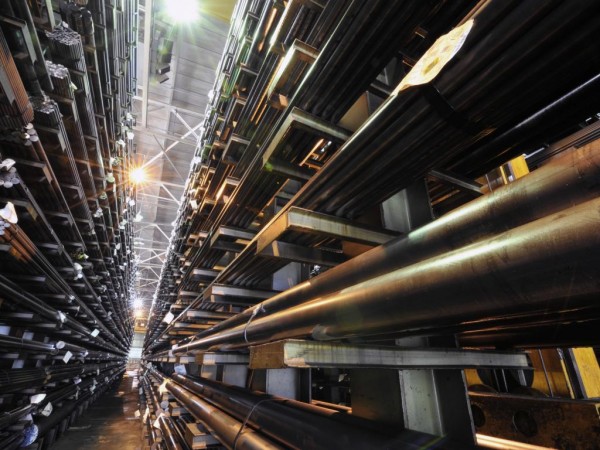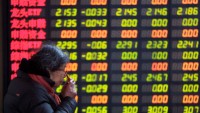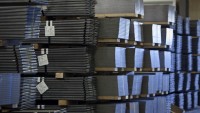Smelters find ways to cope amid China’s overproduction
| Eana Maniebo | | Oct 10, 2015 12:25 PM EDT |
(Photo : Benzinga) The sector’s producers are deeply concerned about the rising exports from China, while production costs such as power remain relatively high.
China's overproduction has prompted demands for alternative smelters and production cuts. Outside China, forced smelter closures and pressured prices has led several Western aluminum producers to accuse China of unfair competition.
Reports consistently show that aluminum continues to slide down in cost but increase in supply and surplus, escalating the worst crisis of the industry in six years. This has also forced high-cost smelters to reduce production again, in order to save the depressing prices. The sector's producers are deeply concerned about the rising exports from China, while production costs such as power remain relatively high.
Like Us on Facebook
Reuters reported that 3.5 million tonnes of production, which amounts to over 10 percent of smelting capacity outside of China, are operating at a loss. Alcoa Inc. has curtailed 170,000 tonnes of annual output this year as part of its review of 500,000 tonnes of smelting capacity announced in March. United Co Rusal has plans to pull back 200,000 tonnes of capacity. Century Aluminum, controlled by Glencore, will shut down its Hawesville, Kentucky smelter which produces 244,000 tonne-per-year.
Norsk Hydro, a Norwegian aluminum producer, has tried to avoid the meltdown by riding on China's imports.
More smelters can mitigate the loss
Norsk Hydro, one of the world's largest aluminum makers, has set up a bauxite and alumina trading business in China named Hydro Aluminum Beijing Ltd. to supply aluminum smelters there. It seems that the strategy to cope with China's unstoppable oversupply is to get closer to the aluminum industry.
Simon Storesund, market analyst and Norsk Hydro senior vice president noted that the operation has been generating revenue. Hydro's China business has capitalized on warehouse supplying, and enabling companies for small consignments. This approach shows China's dependence on imports and how to profit from it to somehow offset the threats of oversupply.
Hope outside of China
Meanwhile Amur Minerals Corporation (London AIM: AMC) has plans to build its own smelter and refinery in conjunction with its Kun-Manie nickel mine in Russia. The company's study has deemed that an Owner Operated Smelting facility located along the Baikal Amur Rail system could substantially triple the Earnings Before Interest, Tax, Depreciation and Amortisation (EBITDA) of the Kun-Manie nickel sulphide project.
"Recently released information on the resources, reserves and potential mine production from both open pit and underground operations indicates that Kun-Manie has the potential to support a long term, large scale operation," says Amur Minerals CEO Robin Young. What is left for Amur to do is to determine the capital cost for the smelting option, and the three products that can be produced.
This news bodes well for Amur as Chinese copper production is headed for a slowdown. As the metal is not exempt from the six-year lows, producers have chosen to be more mindful of the timing of the projects. This halt on copper production expansion may help the weak and sluggish copper prices.
Tagssmelters, commodities, base metals, Metals, China's overproduction, Aluminum, Nickel, Copper, Amur Minerals, Kun-Manie mine, Norsk Hydro, smelter closures, metal surplus
©2015 Chinatopix All rights reserved. Do not reproduce without permission
EDITOR'S PICKS
-

Did the Trump administration just announce plans for a trade war with ‘hostile’ China and Russia?
-

US Senate passes Taiwan travel bill slammed by China
-

As Yan Sihong’s family grieves, here are other Chinese students who went missing abroad. Some have never been found
-

Beijing blasts Western critics who ‘smear China’ with the term sharp power
-

China Envoy Seeks to Defuse Tensions With U.S. as a Trade War Brews
-

Singapore's Deputy PM Provides Bitcoin Vote of Confidence Amid China's Blanket Bans
-

China warns investors over risks in overseas virtual currency trading
-

Chinese government most trustworthy: survey
-

Kashima Antlers On Course For Back-To-Back Titles
MOST POPULAR
LATEST NEWS
Zhou Yongkang: China's Former Security Chief Sentenced to Life in Prison

China's former Chief of the Ministry of Public Security, Zhou Yongkang, has been given a life sentence after he was found guilty of abusing his office, bribery and deliberately ... Full Article
TRENDING STORY

China Pork Prices Expected to Stabilize As The Supplies Recover

Elephone P9000 Smartphone is now on Sale on Amazon India

There's a Big Chance Cliffhangers Won't Still Be Resolved When Grey's Anatomy Season 13 Returns

Supreme Court Ruled on Samsung vs Apple Dispute for Patent Infringement

Microsoft Surface Pro 5 Rumors and Release Date: What is the Latest?













